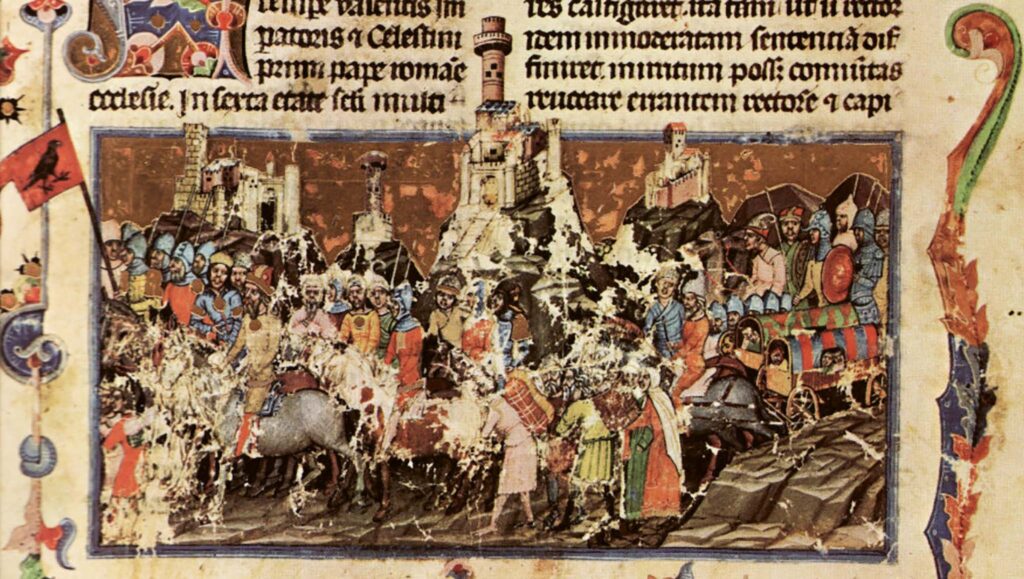Jordan Peterson used to say that as a psychology professor in Canada he was the first to talk about the famine in Ukraine, the Holodomor (1932-33) to his students[1]. My personal experiences are no different from his – most Western students at University College London (UCL) have never heard of the Holodomor, not even those who have picked post-communist studies as their specialisation, and therefore are supposedly more interested and involved in the region. Given the increasingly widespread appeal of Marxist beliefs in Western academia, it is important to remind ourselves of what really happened under Soviet-type planned economies. Albeit far from perfect systems, free market economies have brought about a remarkable prosperity to the world – in sharp contrast with command economies which ended up in famines whenever and wherever they were tried. Here is the reason why.
Since Amartya Sen’s famous 1981 study[2], the causes of famines are attributed either to food availability decline (FAD) or failure in exchange entitlements (FEE). The first one, FAD, is a Malthusian approach, which argues that famines in the past occurred due to unfavourable weather conditions, or a rapid increase in population which was not matched by expansion in food production. Amartya Sen argued that while this framework explains most famines in history, from the 20th century on a new framework was needed to explain famines. In modern times it is not the decline in food availability due to natural disasters which leads to famines, but bad policies.
The distributive approach or FEE, which was the novelty of Amartya Sen’s work, argues that from the 20thcentury onward, in the famine hit areas there was always enough food to go around and feed the population, but because of the failures of governments to distribute food appropriately, famines occurred. It says that the cause of famine is bad government policy, as there are no natural reasons why most famines of the 20th century should have happened. The Holodomor is a classical example of FEE – there was not a significant reduction in the availability of food in Ukraine when the famine happened – but bad government policies (which are the direct consequences of economic planning) resulted in the catastrophe.
The Holodomor was a result of a series of disastrous economic policy steps introduced to pursue the Communist utopia. According to the Marxist-Leninist doctrine, private property should be eliminated, so in 1929 Stalin introduced collectivisation in the USSR, nationalising privately owned properties and centralising agricultural production. Along with collectivisation, there was a “dekulakization” campaign going on as well. Kulaks were rich peasants, who were deemed the enemies of the state and of the revolution due to their “capital ownership”’ and resistance to collectivisation. These policies were highly unpopular and disastrous in the whole of the Soviet Union; many who tried to resist were sent to the Gulags; it also resulted in a mass movement of people, as peasants who were victims of nationalisation moved to the cities. Agricultural production was not ready for such a rapid and careless restructuring, which had tragic consequences – the labour force available to cultivate lands was reduced, while the expertise and know-how of growing plants disappeared from rural areas.
The problems were not apparent immediately. As a matter of fact, the Holodomor was preceded by an exceptionally good harvest in 1930. The propaganda used it to praise collectivisation and argue that it was working. A consequence of Ukraine meeting the agricultural targets due to the 1930 good harvest was that the quotas of how much agricultural products Soviet Ukraine must supply were set higher. Unlike in market economies where it is individual decisions which determine how much is produced, and it is the supply and demand mechanism which sets the equilibrium, under planned economies, all economic decision-making is centralised, and because everything is owned by the state (around 90% of the GDP is produced by the state under planned economies, while only approx. 30% of the GDP is produced by the state under free market capitalism) the state tells every provider how much it is obliged to produce and supply to the state. If the supplier can easily meet the target (as did Ukrainian agriculture in 1930) the demands are set higher to ensure economic growth.
What the gradual increase in plan targets do not account for in planned economies is that agricultural production is unpredictable. While Ukraine was able to meet the targets in 1930, a year later, when the harvest was average, it suddenly became impossible to fill the high quotas. The harvest in the year of the famine was average – that is, it would have been completely enough to feed Ukraine’s population, but not enough to meet the plan. There was no agricultural failure, no natural disaster. But because of the structure of planned economies, this performance was not good enough. The plan was not met – Soviet propaganda claimed that the revolution is being boycotted, shouted sabotage, and insisted that Ukraine supply more products. But there was nothing more to supply.
Draconian measures were introduced to make Ukraine supply more so that the plan can be met. Peasants who wanted to leave Ukraine in search for food were prosecuted. Soldiers were sent to Ukrainian farms to monitor wheat collections, and taking even just a straw of wheat was punishable by death. Grain ownership was criminalised in August 1932, any possession of “state property” was severely punished – in turn, villagers who did not meet with their quotas had their livestock requisitioned. Eventually, in the hunt to meet with the quotas even seed grain was confiscated. No draft animals to farm the land, no seed to sow. No surprise that the famine continued next year too. All it is to say – the Holodomor is a pure FEE case, there were no natural reasons why the Holodomor should have happened. It was the disastrous steps of planned economies – which spring from its very core – that lead to the death of millions.
Amidst the disaster, in 1932 Stalin was asked to relieve quotas, but he insisted on Ukrainians supplying as planned. His step could have had many dark incentives – wiping out his opposition in Ukraine or just following Marxist ideology, which says that agricultural surpluses should be used to develop the industry (amidst the famine, confiscated Ukrainian supplies were sold on the international market in exchange for industrial products) are just a few of several explanations. However, the harsh policies which were introduced to repress Ukraine point at Stalin’s deliberate attempt to worsen the famine. For instance, while Kazakhs were allowed to leave Kazakhstan during the famine to try and find food in other parts of the USSR, Ukrainians were not allowed to leave Soviet Ukraine. The draconian measures punishing those who “steal” government property were also uniquely there only in Soviet Ukraine. It shows that the Soviet leadership did use the famine-created opportunity to repress the Ukrainian people. Hence the Ukrainian position, which is officially recognised by Hungary, the USA and Canada as well, that the Holodomor was a genocide.
The Holodomor resulted in the death of approximately 6 to 8 million people[3]. These estimates do not take into account miscarriages, still births and the long-term adverse health effects of the famine. Most of the casualties were concentrated in the territories of Soviet Ukraine, but the food shortages impacted other parts of the Soviet Union too, especially in the Central Asian republics. Beside Ukraine, Kazakhstan was the most affected republic with 1.5 to 2 million victims, which accounted for 38% of Kazakhstan’s population[4]. The Soviet Union, however, was not the only planned economy to have had famines. Communist China, North Korea and Vietnam also had them, as a direct consequence of the bad management of the economy. These FEE or policy-induced famines are the results of the structural failures of command economies, powerfully showing that this economic system does not work.
[1] Jordan Peterson on the Holodomor in Ukraine, UkeTube, 10 February 2020, https://www.youtube.com/watch?v=uGmdZR_Ib7A
[2]Amartya Sen, Poverty and Famines – An Essay on Entitlement and Deprivation, (Clarendon Press Oxford), 1981.
[3] Bethany Richardson-Smith, The Holodomor: genocide or the result of bad planning?, (University of Huddersfield Press), 2020, 1.
[4] Richardson-Smith, The Holodomor: genocide or the result of bad planning?, 4.








